My bass, perch and saratoga fly box
{{start}}
I have lumped the flies that I prefer for Australian Native fish into one group as by in large the species I target are all structure oriented. They tend to frequent areas with structure such as weed, sunken logs, rock bars, under cut banks, holes and drop offs etc. and generally react in much the same way.
{{end}}

{{+1}}Borumba Dam{{-1}}
{{start}}
Located near Imbil south of Gympie Borumba Dam is unique in that it offers both great Bass and Saratoga fly fishing.{{end}}
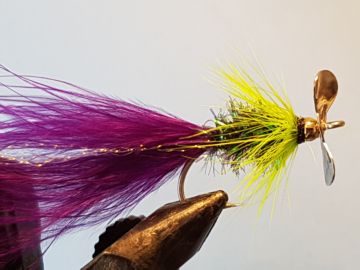
{{+1}}Chatto’s fizzer{{-1}}
{{start}}
This fly swims well and the propeller at the front adds an element of action that fish find enticing. You can tie this fly in any colour combination to mimic the colour of some of the more popular lure colours that your mates that fish the "dark side" use so successfully.{{end}}

{{+1}}Metalic pink TBH brown woolly bugger{{-1}}
{{start}}
This is a variation of a bead head woolly bugger that has worked very well for me in Lake Eucumbene and Tantangara Reservoir on brown trout and on Lake Maroon for bass.{{end}}
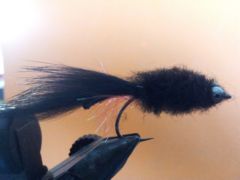
{{+1}}Destroyer – Chatto’s variant{{-1}}
{{start}}
My variant does not include the shroud of mara wool tips around the zonker tail. I have left that off because for me the currents around the body of the fly produce more movement in the tail when it is not shrouded. I like hot spots on flies and accordingly have added a hot spot of red Wapsi palmer chenille under the tail. For my deeper water flies, as many other users have done, I use bead chain eyes rather than the unweighted plastic chain eyes as on the original.{{end}}

{{+1}}Foam cicada – Chatto’s ‘black prince’{{-1}}
{{start}}
This fly sits well into the surface film like the natural and has a very realistic profile when viewed from below. I have made it smaller than the natural on purpose as flies tied as big as the natural are frustratingly cumbersome to cast on #8 weight outfits that are my preference of the target species mentioned above. The fly lands with a good audible fish attracting 'plop' and with its outstretched wings that are only about half as long as the natural still wiggle with the slightest movement in a very enticing way.{{end}}
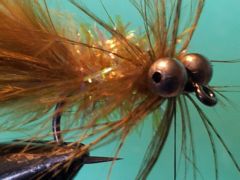
{{+1}}Double eyed, soft hackle dog nobbler{{-1}}
{{start}}
At the same time the woolly bugger was evolving in the US in England a similar fly that became known as a dog nobbler was also evolving. Dog nobbler flies were heavily weighted for use in deeper water, were generally not palmered with a hackle and often were tied with bead chain eyes.{{end}}
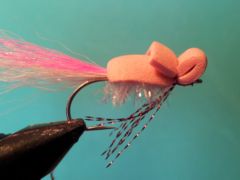
{{+1}}Gartside gurgler{{-1}}
{{start}}
Fishing with a gurgler can be very exciting because you often see the fish behind the fly just before it strikes. With fairly subtle changes you can vary this fly to fit a wide range of surface fishing situations.{{end}}
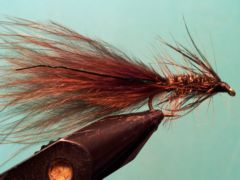
{{+1}}Brown damsel bugger{{-1}}
{{start}}
Unfortunately for the midge it's not only swallows that have them on their menu it's also carnivorous damsel nymphs and then of course further up the food chain trout.{{end}}
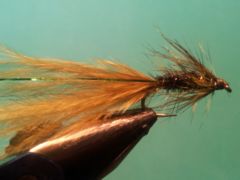
{{+1}}Olive damsel bugger{{-1}}
{{start}}
Keep an eye for swallows dipping on the water feeding on midge. That's a sure sign that there will also be damsel nymphs around and then of course further up the food chain there are likely to be trout feeding on both the midge and the damsel nymphs. This is the time to start thinking about fishing either damsel buggers or olive woolly buggers.{{end}}
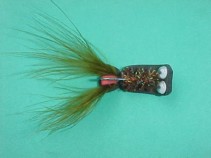
{{+1}}Wiggle frog – Chatto’s original{{-1}}
{{start}}
You can fish this fly on an intermediate or faster sinking line but my preference is to fish it on a floating line so that it swims just below the surface. On a floating line the best technique for fishing the fly is to give it one or two short strips and then rest it for a moment whilst it comes back to the surface. Rest it there for a few more seconds and then repeat the process.{{end}}













